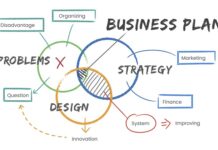Artificial Intelligence (AI) is transforming industries and how people interact with the digital world in the fast-paced world of technology. As 2024 approaches, organisations and developers must use AI in product creation more than before. This detailed article provides insights, tactics, and best practices for AI product development.
It covers everything from designing your AI product to ethical issues, providing a profound grasp of how to use AI in the ever-changing technological context. Join us as we learn about AI product development to enable you to innovate and leave a legacy in 2024 and beyond.
Define Your AI Product
Clarity in product definition is key in AI product development. Identify a problem or opportunity your AI product wants to address or exploit. Knowing your audience and creating a convincing value proposition is essential to development choices. A clear idea by an AI product development company guides growth and increases success.
Data Collection and Preparation
High-quality data underpins every successful AI solution. AI developments in 2024 need a strong data strategy. Data collection and preparation must match your product’s goals. Data cleansing, normalisation, and preprocessing improve AI model accuracy. Use AI-powered data preparation tools to ensure your models are based on trustworthy and representative data.
Selecting the Right AI Framework and Tools
Choosing the correct AI framework is crucial to progress. TensorFlow, PyTorch, and scikit-learn will give benefits in 2024. Assess your project needs and pick a framework that meets your development objectives. Consider usability, community support, and programming language compatibility. An educated selection at this point ensures AI tool development and use efficiency.
Creating and Training AI Models
Nuanced domain and technical understanding are needed to create successful AI models. Training models using various datasets improves flexibility and performance. To improve model accuracy, use hyperparameter adjustment and regularisation. You must stay current on AI model designs to ensure your models use cutting-edge methodologies and function well.
Validating and Testing for Accuracy and Reliability
AI product development requires rigorous testing and validation. Test your models in multiple settings, including edge cases, for robustness. Cross-validation enhances model generalizability. Before deployment, rigorous testing helps detect and fix errors, ensuring your AI solution is accurate and reliable. Ensuring end-user success with an AI product requires continuous and thorough testing throughout the development lifecycle.
Product AI Integration
User experience and adoption increase when AI is effortlessly integrated into your product. User-friendly interfaces that employ AI to enhance functionality without adding complexity are preferred. Easy integration and developer documentation make your AI product accessible and attractive to more people. Advanced AI capabilities and user-friendly interfaces must be balanced to allow consumers to utilise AI without feeling overwhelmed by technical details.
Ethical and bias considerations
In AI product development, ethics are paramount. Implement fairness-aware methods to prevent AI biases. Transparently describe your AI product’s ethical standards to build trust. To reduce ethical problems, regularly check your AI models for biases and iterate on development. Ethical concerns guarantee that your AI product follows social norms, improving user experience and reducing backlash.
Continuous Improvement
AI product development is iterative beyond launch. User input and model performance monitoring should be used for continual improvement. Stay flexible and use data to improve. AI technology constantly changes, so developers must update models, solve new issues, and incorporate new advances. Embrace constant improvement to keep your AI product relevant and thriving in the changing marketplace.
Regulatory Compliance
Regulatory compliance becomes more important as AI systems evolve. Keep up with data protection, ethical AI, and industry rules. Actively handle compliance concerns to reduce legal risks and enhance user confidence. Protect user data with robust security measures to ensure your AI product meets global and regional requirements. You must constantly monitor legislative developments to keep an AI product safe and compliant.





